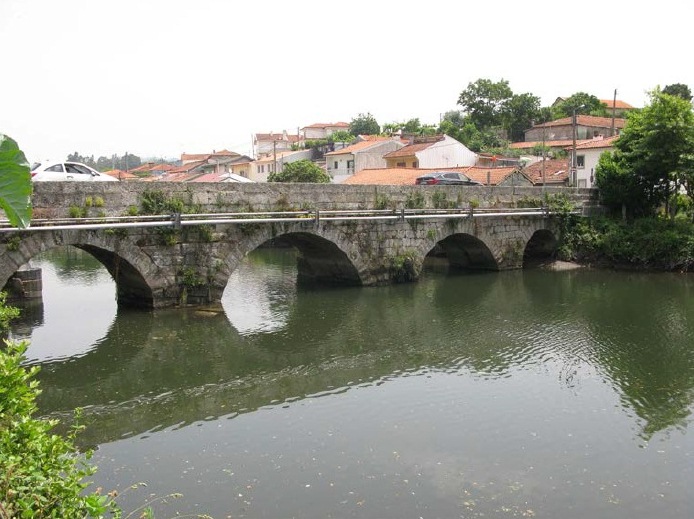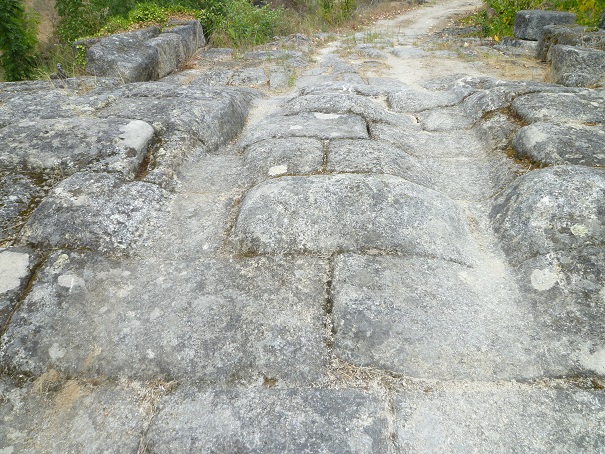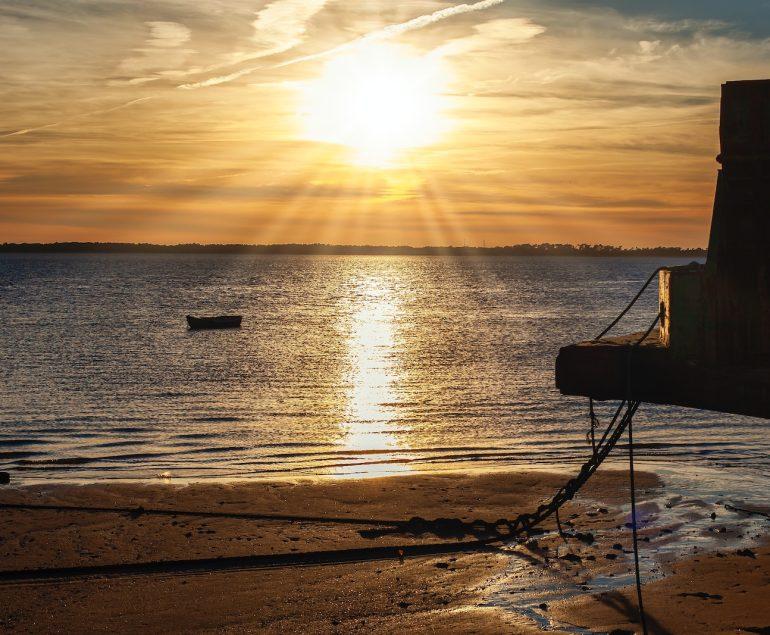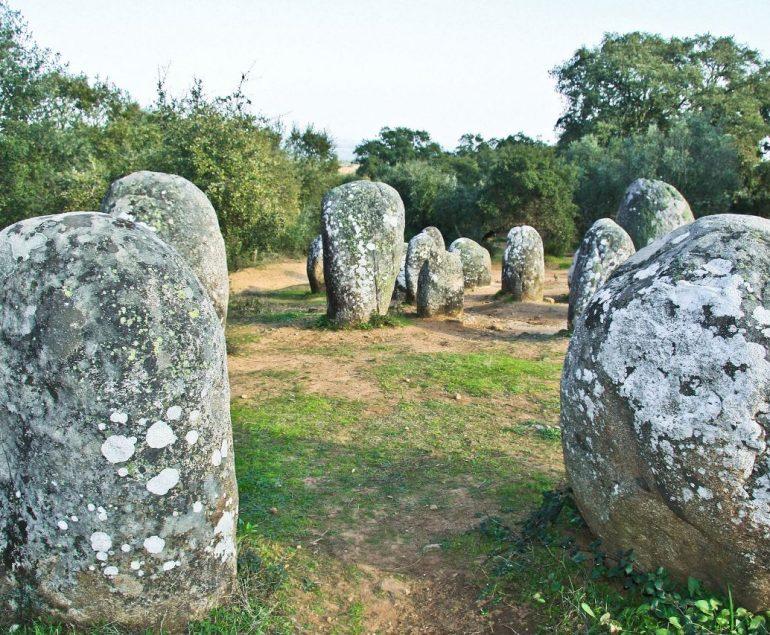 Ponte de Lima – Naïve Oil by Albino José Moreira
Ponte de Lima – Naïve Oil by Albino José Moreira
Roman bridges aren't just beautiful structures; they also reveal a lot about the area's history and culture. It also demonstrates that the ancient Romans left an indelible influence on the landscapes of Portugal and other countries.
Several of these bridges remain key transportation links, linking towns and making commerce simpler.
Northern Portugal is known for its impressive Roman bridges that were built over two thousand years ago. These bridges were constructed using Roman engineering techniques and were designed to withstand the test of time. These are a few famous examples:
Ponte de Trajano

Official name: Ponte de Trajano Other names: Roman Bridge of Chaves.
Total length: 140 m (460 ft) I Width: 8.9 m (29 ft) I Built: 100 CE
This is one of Portugal’s most well-known Roman bridges. The bridge is in the city of Chaves and crosses the Tamega River. It has a length of 140 metres and 16 visible arches with regular cushioning and cushioned staves. The two arches on the left bank are taller than the rest, and warehouses with rectangular slatted openings cover the four on the right bank.
They embellished the bridge with eight prismatic talhamares of varying size and height, and between the sixth and seventh arches, there is a semicircular pillar construction with the year 1880 written on it.
The bridge’s construction is commemorated by two monolithic cylinders, called Padrão dos Povos. The flat top of the bridge is made of parallel granite slabs, and they made the side lanes of cement. The bridge has a stone cornice, semicircular gargoyles, and an iron grate.
Ponte de Vilela

This bridge is located near the city of Braga and dates back to the 1st century AD. It spans the River Cávado and has four arches. It was originally part of the ancient Roman road that connected Bracara Augusta (modern-day Braga) to Astorga in Spain.
The Bridge of Vilela is composed of four circular arches built of granite stones.
Cutlasses with triangular and quadrangular shapes support the three pegs that hold up the arches. The two side arches’ spans [openings] are now covered.
The deck, which is composed of granite pavement, is shaped like a ramp at the ends and runs horizontally over the centre arches.
This bridge, which has been difficult to date because of its mediaeval construction and technological features, could be an example of the necessity to update the Roman-era road system.
This must have been necessary because more and more local roads made it possible to cross the Sousa River.
The Bridge de Vilela served as a significant crossing point for travellers from the coast going to places like Amarante and Vila Real, according to the “Parochial Memories” of 1758.
Ponte de Mizarela

Overall, the Ponte de Mizarela is a fascinating landmark that shows off the beauty, history, and culture of northern Portugal. Whether you are a history buff, an architecture enthusiast, or a nature lover, this bridge is definitely worth a visit.
Ponte de Guimarães

Ponte de Guimarães is a Roman bridge located in the city of Guimarães, in the north of Portugal. It was built in the 1st century AD and is one of the oldest and best-preserved Roman bridges in Portugal.
The bridge spans the Selho River and is made of granite. It has three arches and is about 100 metres (328 feet) long. The piers that support the arches rest on the riverbed, and a parapet with sculptural reliefs tops it all off.
The Ponte de Guimarães played an important role in the Roman road network in Portugal, connecting the cities of Bracara Augusta (now Braga) and Cale (now Porto). It was an essential transportation route for travelers, merchants, and soldiers, and it facilitated the flow of goods and people between the two cities.
The bridge has had many repairs and renovations over the years, including a major one in the 14th century. During this restoration, the bridge was raised, and a fortified tower was built at one end of the bridge to defend the city against enemy attacks. The tower is still visible today and is known as the Torre de São Sebastião.
The Ponte de Guimarães is an important cultural landmark in the city of Guimarães and attracts many visitors each year. It is also part of the Portuguese Way of the Camino de Santiago, a popular pilgrimage route to Santiago de Compostela in Spain, and is a testament to the rich history and culture of the region.
Ponte de Barcelos

The Ponte de Barcelos, also known as the Medieval Bridge of Barcelos, spans the river Cávado between the Portuguese parishes of Barcelinhos and Barcelos, Vila Boa and Vila Frescainha (São Martinho and São Pedro), the city and municipality of Barcelos, and the district of Braga.
The arches that span the centre of the river are the largest and tallest on the bridge. On its pillars are skimmers with a gothic design. This bridge is 100 metres long, 18 metres tall, and 15 metres wide, and it includes a pedestrian balcony.
It became a significant crossing point for pilgrims on the Portuguese Way to Santiago, as well as for the large fairs that have been held in Barcelos since the High Middle Ages.
The Ponte de Barcelos was designated a national monument in 1910.
Ponte do Arquinho

Ponte Romana do Arquinho is a Roman bridge located in the town of Mondim de Basto in northern Portugal. It was built in the 3rd century AD and spans the Tâmega River. The bridge has one arch and is approximately 15 metres long and 6 metres high.
The Ponte Romana do Arquinho was an important part of the ancient Roman road that connected Braga to Astorga. The bridge was originally built using granite blocks and is considered one of the most picturesque Roman bridges in the region. It is surrounded by lush greenery and a scenic waterfall, making it a popular spot for tourists to visit and take photos.
Despite its age, the Ponte Romana do Arquinho is still standing today and is a testament to the engineering skills of the ancient Romans. The bridge has been restored and is now a protected national monument in Portugal. It is a popular destination for hikers and nature enthusiasts who want to explore the beautiful scenery of the Tâmega River valley.
Ponte de Lima Bridge

The Ponte de Lima, located in the town of Ponte de Lima, is one of the most significant Roman bridges in Portugal. It was built in the 1st century AD during the Roman occupation of the Iberian Peninsula, and it is considered to be one of the oldest bridges in Europe.
The bridge spans the Lima River, which is a tributary of the Douro River, and it was an important transportation route during the Roman Empire. The bridge was a crucial component in the region’s development because it allowed travelers, merchants, and soldiers to cross the river.
The Ponte de Lima is made of granite and has nine arches, which are supported by piers that rest on the riverbed. The arches have different sizes, with the largest one in the center, which allows the river to flow freely. The bridge has a length of about 240 metres (787 feet) and a width of about 4.2 metres (14 feet).
Over the centuries, the bridge has undergone several renovations and repairs. In the 14th century, it was partially destroyed during a war between Portugal and Castile, and it was later rebuilt. During the 19th century, it was again repaired and expanded to accommodate the growing traffic.
Today, Ponte de Lima is a popular tourist attraction and a symbol of the town’s rich history and culture. The bridge is part of the Portuguese Way of the Camino de Santiago, a popular pilgrimage route that leads to the Cathedral of Santiago de Compostela in Spain.
Ponte do Prado

The Bridge of Prado, also known as the Ponte de Porto or the Ponte Romana de Prado, has a long history dating back to Roman times. It is believed to have been built in the 1st century AD as part of the Roman road network connecting the cities of Bracara Augusta (modern-day Braga) and Asturica Augusta (modern-day Astorga).
In the 1600s, the bridge was rebuilt because it had been damaged by floods and constant use over the years.Archbishop Frei Bartolomeu dos Mártires was in charge of the reconstruction work, which included adding two arches to the original Roman building.
The Bridge of Prado is built using granite stone and features a total of five arches. The longest arch is about 30 metres long, and the two smaller ones that were added during the renovation are each about 10 metres long.The bridge has a length of 100 metres and a width of 5 meters, with a parapet on either side.
Today, the Bridge of Prado is a popular place for tourists to visit and a well-known landmark in the area. It has beautiful views of the Cávado River and the countryside nearby. Both locals and visitors use it as a path for walking and cycling between the villages of Vila Verde and Prado.
Ponte de São Gonçalo
The Ponte de São Gonçalo, located in the town of Amarante, is another important Roman bridge in Northern Portugal. It was built in the 1st century AD and spans the Tâmega River.
The bridge is made of granite and has three arches, with the central arch being the largest. The piers that support the arches rest on the riverbed, and a parapet with sculptural reliefs tops it all off.
The bridge played an important role in the Roman road network in Portugal, connecting the cities of Braga and Porto. It was an important way for travelers, merchants, and soldiers to get from one city to the other, and it helped goods and people move between the two cities.
The bridge has had many repairs and renovations over the years, including a major one in the 18th century.During this restoration, the parapet was decorated with baroque-style sculptures of religious figures, which are still visible today.
The Ponte de São Gonçalo is an important cultural landmark in the town of Amarante and attracts many visitors each year. It is also part of the Portuguese Way of the Camino de Santiago, a popular pilgrimage route to Santiago de Compostela in Spain, and is a testament to the rich history and culture of the region. Additionally, the bridge is named after Saint Gonçalo, a Portuguese saint who is believed to have performed several miracles in the area, making it a significant religious site as well.





